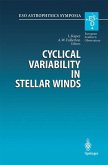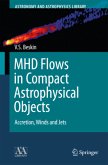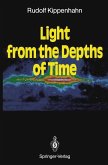A broad approach, moving from microquasars to AGN, to the topic of accretion/ejection in relativistic jet sources that discusses both observational and theoretical aspects. Based on lecture notes, the book benefits students of jet astrophysics at all levels.
The discovery of the ?rst case of superluminal radio jets in our galaxy in 1994 from the bright and peculiar X-ray source GRS 1915+105 has opened the way to a major shift in the direction of studies of stellar-mass accreting binaries. The past decade has seen an impressive increase in multi-wavelength studies. It is now known that all black hole binaries in our galaxy are radio sources and most likely their radio emission originates from a powerful jet. In addition to the spectacular events related to the ejection of superluminal jets, steady jets are known from many systems. Compared with their supermassive cousins, the nuclei of active galaxies, stellar-mass X-ray binaries have the advantage of varying on time scales accessible within a human life (sometimes even much shorter than a second). This has led to the ?rst detailed studies of the relation between accretion and ejection. It is even possible that, excluding their "soft" periods, the majority of the power in gal- tic sources lies in the jets and not in the accretion ?ows. This means that until a few years ago we were struggling with a physical problem, accretion onto compact objects, without considering one of the most important components of the system. Models that associate part of the high-energy emission and even the fast aperiodic variability to the jet itself are now being proposed and jets can no longer be ignored.
The discovery of the ?rst case of superluminal radio jets in our galaxy in 1994 from the bright and peculiar X-ray source GRS 1915+105 has opened the way to a major shift in the direction of studies of stellar-mass accreting binaries. The past decade has seen an impressive increase in multi-wavelength studies. It is now known that all black hole binaries in our galaxy are radio sources and most likely their radio emission originates from a powerful jet. In addition to the spectacular events related to the ejection of superluminal jets, steady jets are known from many systems. Compared with their supermassive cousins, the nuclei of active galaxies, stellar-mass X-ray binaries have the advantage of varying on time scales accessible within a human life (sometimes even much shorter than a second). This has led to the ?rst detailed studies of the relation between accretion and ejection. It is even possible that, excluding their "soft" periods, the majority of the power in gal- tic sources lies in the jets and not in the accretion ?ows. This means that until a few years ago we were struggling with a physical problem, accretion onto compact objects, without considering one of the most important components of the system. Models that associate part of the high-energy emission and even the fast aperiodic variability to the jet itself are now being proposed and jets can no longer be ignored.








